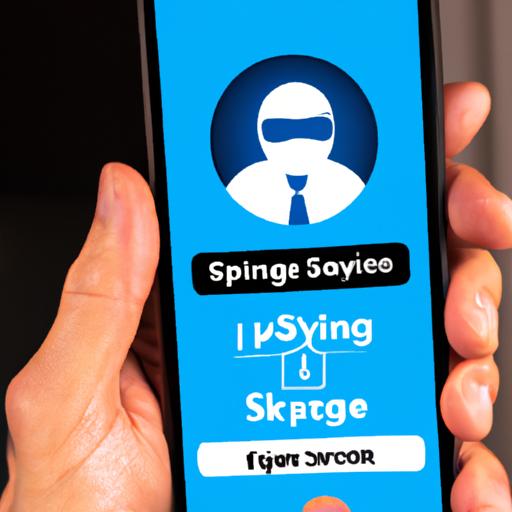Have you ever received a friend request on Skype from someone you don’t know? Did you accept it? If yes, you’re not alone. According to a recent study, over 40% of Skype users receive spam friend requests every day. While it may seem harmless to accept them, it could lead to serious consequences, including identity theft, malware and phishing attacks, and financial fraud.
In this article, we’ll explore the problem of spam contact requests on Skype, the risks associated with them, and tips on how to prevent them. It’s essential to address this issue to protect your privacy and security online. Let’s dive in!
Understanding Spam Contact Requests on Skype

A. Definition of Spam Contact Requests
Spam contact requests are unsolicited friend requests on Skype from unknown or suspicious individuals. These requests are sent out in bulk by spammers using automated software, hoping to trick users into accepting the request and gaining access to their personal information.
B. How Spammers Get Your Contact Information
Spammers can obtain your Skype contact information through various means, including social engineering tactics, phishing scams, and data breaches. They can also use software to scrape your information from public directories, such as business listings or social media profiles.
C. Why Spammers Target Skype Users
Skype has over 300 million active users, making it a prime target for spammers. Additionally, Skype’s communication features, such as voice and video calls, make it an attractive platform for scammers to conduct their activities. Spammers can use Skype to spread malware, steal personal data, and conduct phishing attacks.
Risks Associated with Spam Contact Requests on Skype

Skype is a popular communication tool used by millions of people worldwide. Unfortunately, it’s also a prime target for cybercriminals who use it to steal personal information, spread malware, and carry out financial fraud. Here are the risks associated with spam contact requests on Skype:
A. Identity theft
Spammers often use fake profiles to trick users into accepting their friend requests. Once they’re added to your contact list, they can access your personal information, including your full name, email address, and profile picture. They can then use this information to steal your identity or sell it to other criminals on the dark web.
B. Malware and phishing attacks
Spammers may send you links or files that contain malware or phishing scams. Clicking on these links or opening these files can infect your computer with viruses, spyware, or ransomware. Phishing scams can also trick you into revealing sensitive information, such as your login credentials or credit card details.
C. Financial fraud
Some spammers may pretend to be a friend or family member in urgent need of financial help. They may ask you to send them money via wire transfer or gift cards, or they may provide you with a fake link to a website where you can enter your credit card details. Once they have your money or your credit card information, they disappear, leaving you with no way to recover your losses.
Tips to Prevent Spam Contact Requests on Skype

As the saying goes, prevention is better than cure. Here are some tips to prevent spam contact requests on Skype:
A. Adjust privacy settings
By adjusting your privacy settings, you can control who can send you friend requests or view your profile. To do this, go to “Tools” > “Options” > “Privacy” and select the appropriate settings. For example, you can choose to only allow friend requests from people in your contact list or limit who can see your profile picture and status.
B. Block suspicious contacts
If you receive a friend request from someone you don’t know or suspect is a spammer, it’s best to block them. To do this, right-click on their name and select “Block This Person”. This will prevent them from contacting you in the future.
C. Report spam contact requests
Reporting spam contact requests is crucial to help Skype identify and prevent spammers from reaching other users. To report a contact request, right-click on their name and select “Report Abuse”. Skype will then investigate and take appropriate action.
By following these tips, you can reduce the number of spam contact requests you receive on Skype and protect your privacy and security online. Stay safe!
What to Do When You Receive a Spam Contact Request on Skype
If you receive a friend request from someone you don’t know or suspect is a spammer, it’s crucial not to accept it. Here are some steps you can take instead:
Do Not Accept the Request
The first step to take is to avoid accepting the request. Accepting the request will grant the spammer access to your online status, profile information, and other sensitive data. Moreover, once you accept the request, it will be challenging to remove the contact from your list.
Report the Contact
The next step is to report the contact to Skype. Reporting the spammer will help protect other users from receiving similar requests. To report a contact, click on the spammer’s name, select “View Profile,” and click on the “Report Abuse” button.
Remove the Contact from Your List
The final step is to remove the contact from your list. Removing the spammer from your list will prevent them from sending you more friend requests in the future. To remove a contact, right-click on the spammer’s name and click “Remove from Contacts.”
In conclusion, receiving spam contact requests on Skype is a common problem that can lead to serious consequences. However, by following the steps outlined above, you can protect your privacy and security online. Remember, do not accept the request, report the contact, and remove the contact from your list. Stay safe online!
Conclusion
In conclusion, receiving spam contact requests on Skype is a prevalent issue that could put your privacy and security at risk. It’s crucial to understand the risks associated with them and take measures to prevent them. By adjusting your privacy settings, blocking suspicious contacts, and reporting spam contact requests, you can reduce the chances of falling victim to identity theft, malware, phishing attacks, and financial fraud.
Remember, staying vigilant online is the key to protecting your personal information. Don’t hesitate to report suspicious activity on Skype and remove contacts that you don’t know. By taking these steps, you’ll enjoy a safer and more secure online experience.
